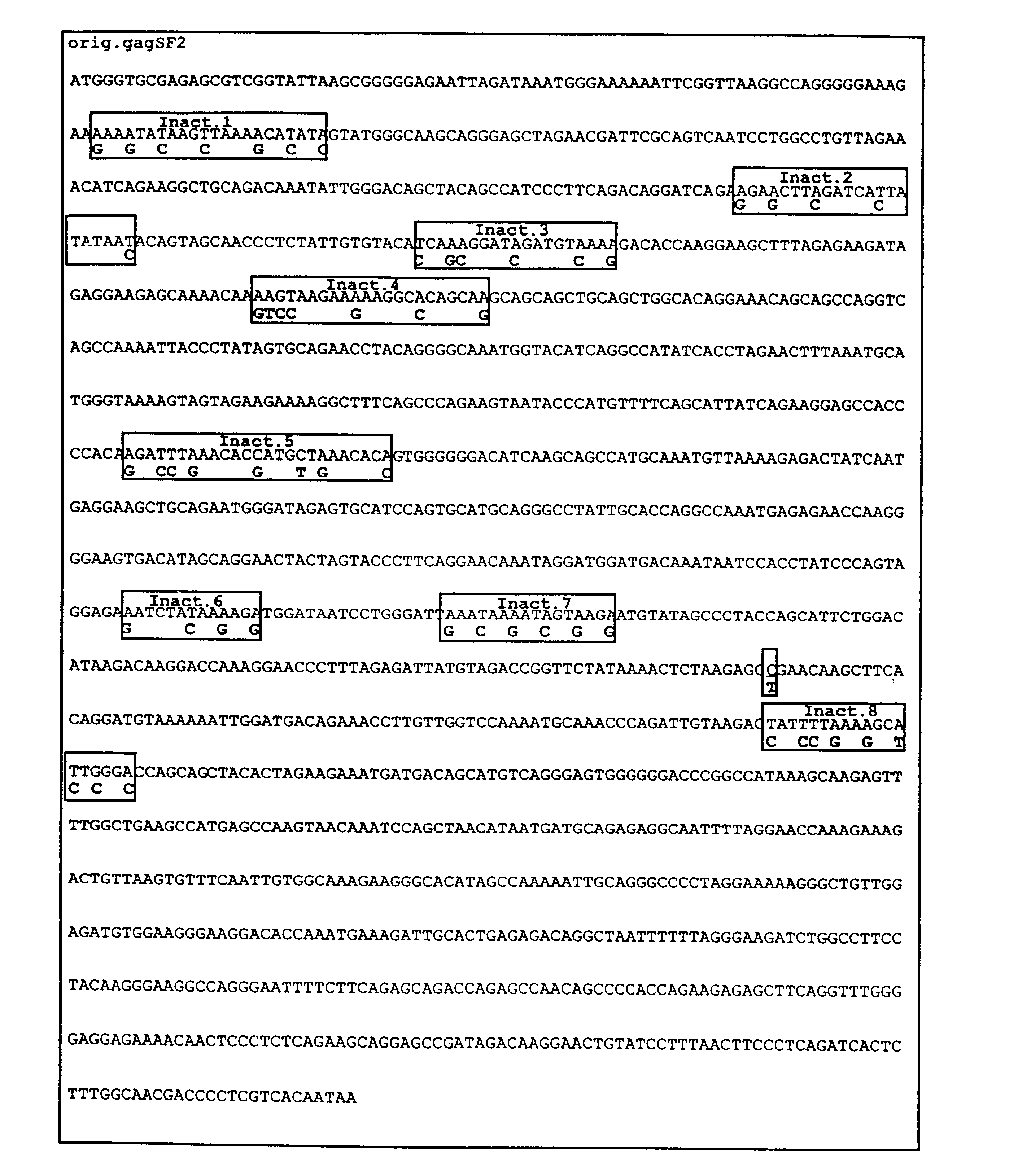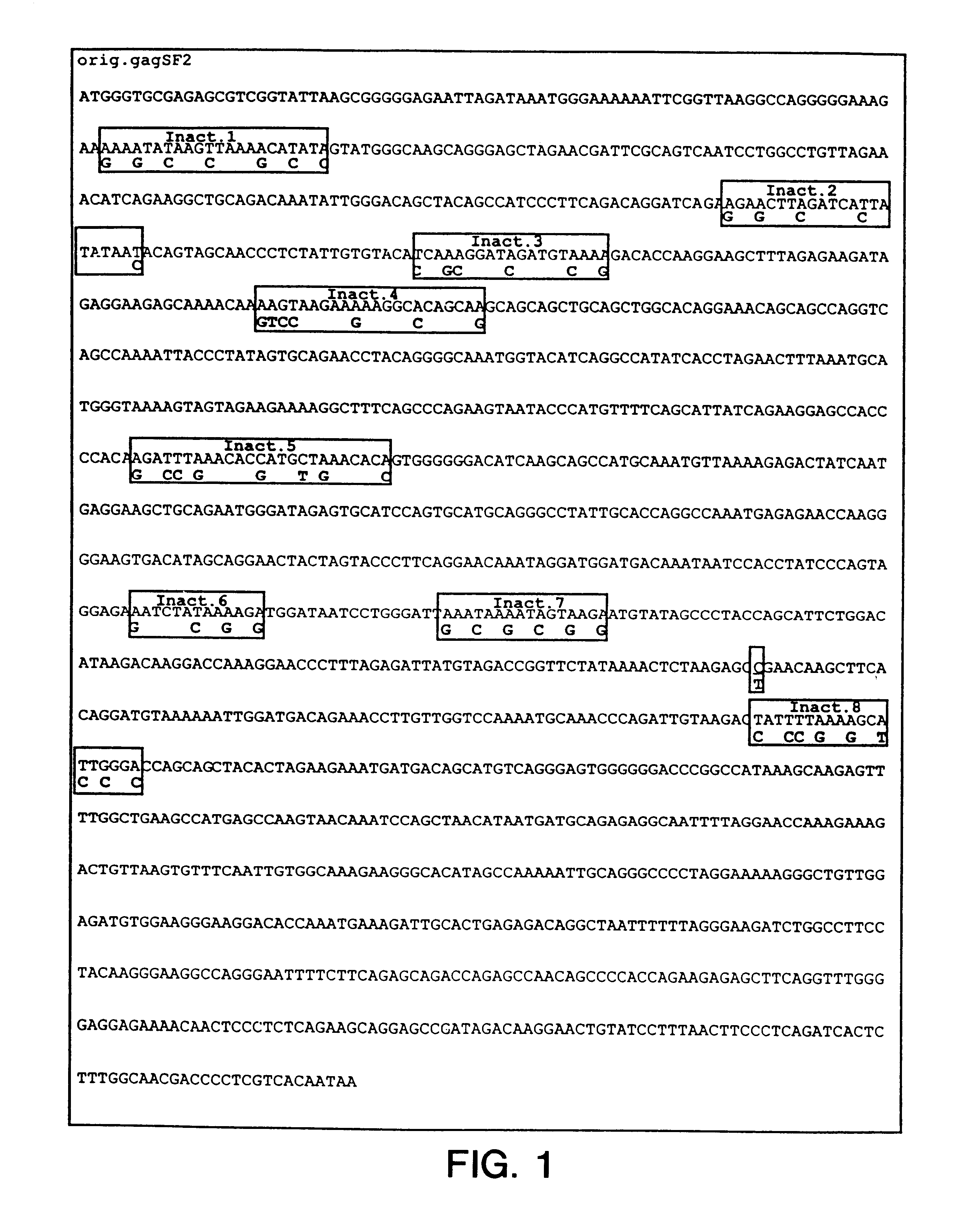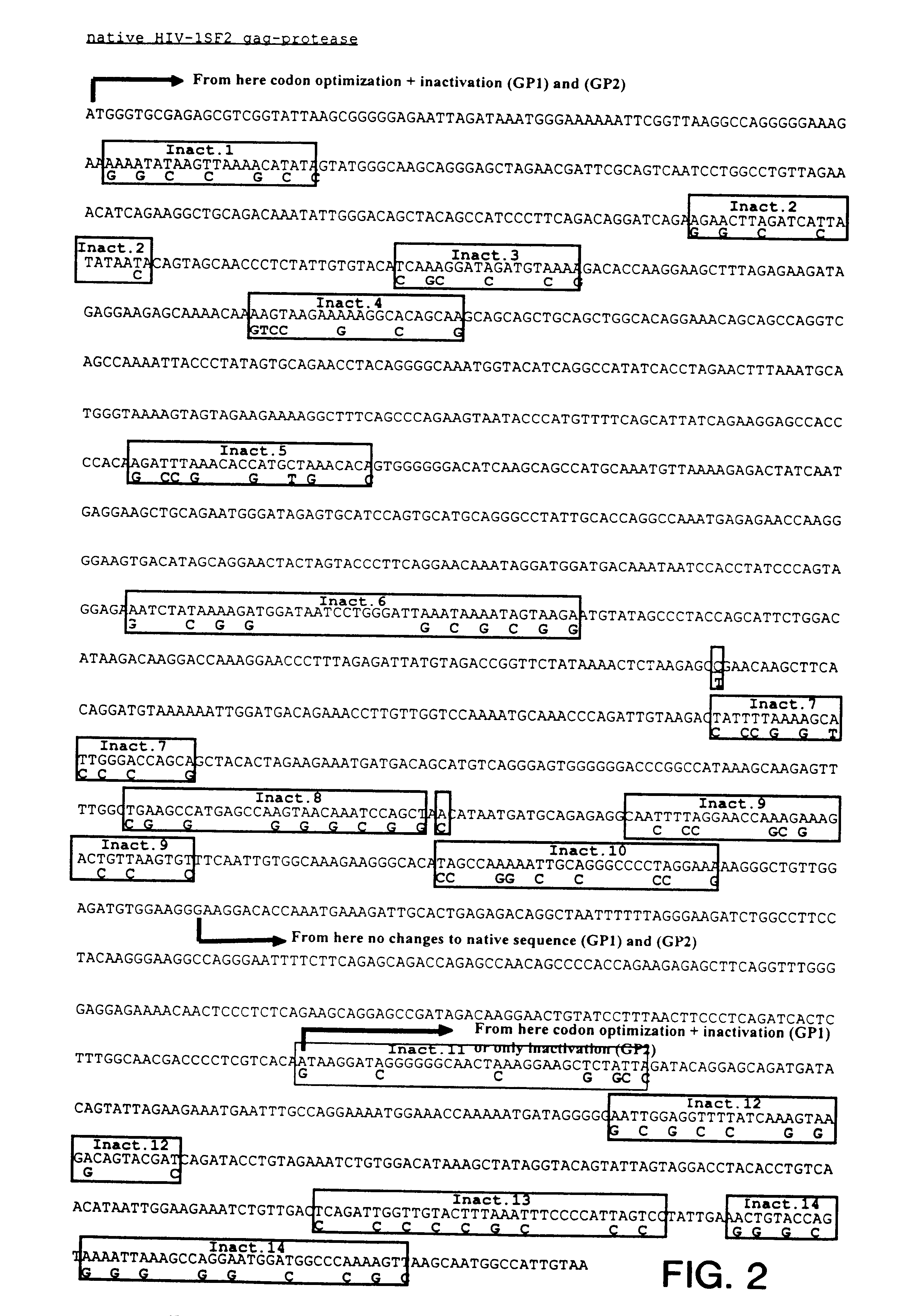Expression of HIV polypeptides and production of virus-like particles
- Summary
- Abstract
- Description
- Claims
- Application Information
AI Technical Summary
Benefits of technology
Problems solved by technology
Method used
Image
Examples
example 1
Generation of Synthetic Gag and Env Expression Cassettes
A. Modification of HIV-1 Gas, Gag-protease, Gag-reverse Transcriptase and Gag-polyoerase Nucleic Acid Coding Sequences
The Gag (SEQ ID NO:1), Gag-protease (SEQ ID NO:2), Gag-polymerase (SEQ ID NO:3), and Gag-reverse transcriptase (SEQ ID NO:77) coding sequences were selected from the HIV-1SF2 strain (Sanchez-Pescador, R., et al., Science 227(4686): 484-492, 1985; Luciw, P. A., et al. U.S. Pat. No. 5,156,949, issued Oct. 20, 1992, herein incorporated by reference; Luciw, P. A., et al., U.S. Pat. No. 5,688,688, Nov. 18, 1997). These sequences were manipulated to maximize expression of their gene products.
First, the HIV-1 codon usage pattern was modified so that the resulting nucleic acid coding sequence was comparable to codon usage found in highly expressed human genes. The HIV codon usage reflects a high content of the nucleotides A or T of the codon-triplet. The effect of the HIV-1 codon usage is a high AT content in the DNA se...
example 2
Expression Assays for the Synthetic Gag, Env and Tat Coding Sequences
A. Gag and Gag-Protease Coding Sequences
The HIV-1SF2 wild-type Gag (SEQ ID NO:1) and Gag-protease (SEQ ID NO:2) sequences were cloned into expression vectors having the same features as the vectors into which the synthetic Gag (SEQ ID NO:4) and Gag-protease (SEQ ID NOs:5, 78 or 79)) sequences were cloned.
Expression efficiencies for various vectors carrying the HIV-1SF2 wild-type and synthetic Gag sequences were evaluated as follows. Cells from several mammalian cell lines (293, RD, COS-7, and CHO; all obtained from the American Type Culture Collection, 10801 University Boulevard, Manassas, Va. 20110-2209) were transfected with 2 .mu.g of DNA in transfection reagent LT1 (PanVera Corporation, 545 Science Dr., Madison, Wis.). The cells were incubated for 5 hours in reduced serum medium (Opti-MEM, Gibco-BRL, Gaithersburg, Md.). The medium was then replaced with normal medium as follows: 293 cells, IMDM, 10% fetal calf ...
example 3
Western Blot Analysis of Expression
A. Gag and Gag-Protease Coding Seauences
Human 293 cells were transfected as described in Example 2 with pCMV6a-based vectors containing native or synthetic Gag expression cassettes. Cells were cultivated for 60 hours post-transfection. Supernatants were prepared as described. Cell lysates were prepared as follows. The cells were washed once with phosphate-buffered saline, lysed with detergent [1% NP40 (Sigma Chemical Co., St. Louis, Mo.) in 0.1 M Tris-HCl, pH 7.5], and the lysate transferred into fresh tubes. SDS-polyacrylamide gels (pre-cast 8-16%; Novex, San Diego, Calif.) were loaded with 20 .mu.l of supernatant or 12.5 .mu.l of cell lysate. A protein standard was also loaded (5 .mu.l, broad size range standard; BioRad Laboratories, Hercules, Calif.). Electrophoresis was carried out and the proteins were transferred using a BioRad Transfer Chamber (BioRad Laboratories, Hercules, CA) to Immobilon P membranes (Millipore Corp., Bedford, Mass.) usin...
PUM
| Property | Measurement | Unit |
|---|---|---|
| Fraction | aaaaa | aaaaa |
| Volume | aaaaa | aaaaa |
| Volume | aaaaa | aaaaa |
Abstract
Description
Claims
Application Information
 Login to View More
Login to View More - R&D
- Intellectual Property
- Life Sciences
- Materials
- Tech Scout
- Unparalleled Data Quality
- Higher Quality Content
- 60% Fewer Hallucinations
Browse by: Latest US Patents, China's latest patents, Technical Efficacy Thesaurus, Application Domain, Technology Topic, Popular Technical Reports.
© 2025 PatSnap. All rights reserved.Legal|Privacy policy|Modern Slavery Act Transparency Statement|Sitemap|About US| Contact US: help@patsnap.com



